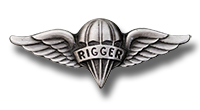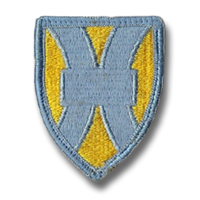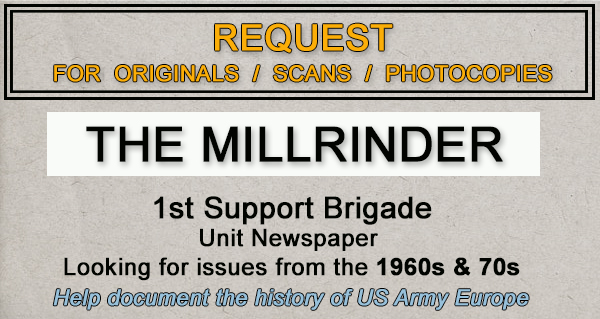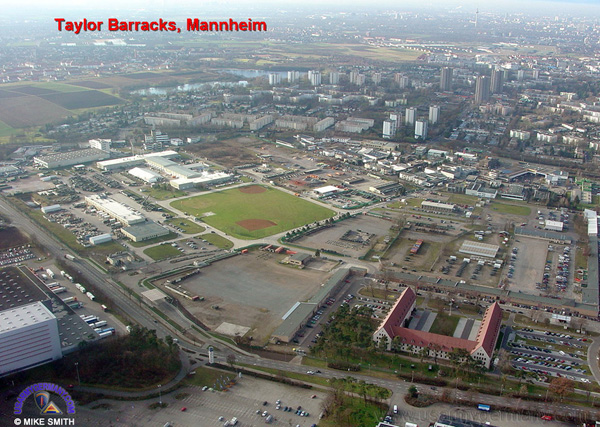| If you do NOT see the Table of Contents frame to the left of this page, then Click here to open 'USArmyGermany' frameset |
||||||||||||||||||||||||
|
1st Support Brigade |
||||||||||||||||||||||||
|
|
||||||||||||||||||||||||
|
||||||||||||||||||||||||
|
|
||||||||||||||||||||||||
| History | ||||||||||||||||||||||||
|
||||||||||||||||||||||||
| 1965 - 1976 | ||||||||||||||||||||||||
| (Source: Special Troops Battalion, 21st TSC webpage on USAREUR website, accessed March 14, 2013) | ||||||||||||||||||||||||
| 1st Support Brigade Constituted 23 June 1965, as Headquarters and Headquarters Company, 1st Support Brigade, a subordinate maintenance support headquarters under the Seventh Army Support Command. The Headquarters was established at Taylor Barracks, Mannheim, Germany. In 1970, The 1st Support Brigade was reassigned as a major subordinate headquarters under the United States Theater Army Support Command (TASCOM). On 19 August 1974, under the auspices of Project CHASE (The consolidation of USAREUR Headquarters and Area Support Elements) the 1st Support Brigade was reorganized, upgraded to a general officer command, and moved its headquarters from Mannheim to Panzer Kaserne, Kaiserslautern, Germany. Consequently, the reorganization of the 1st Support Brigade provided for a dual function headquarters: Combat Service Support and Area Support. In 1976, the 1st Support Brigade’s personnel strength was increased to 16,000, thereby constituting the largest brigade in the U.S. Army. Consequently, DA approved the elevation of the commander’s position to a Major General, and, on 19 August 1976, the brigade was redesignated the 21st Support Command. |
||||||||||||||||||||||||
| (Source: Annual Supplement to the Unit History of the 1st Support Brigade, 1974) | ||||||||||||||||||||||||
|
The Headquarters and Headquarters Company, 1st Support Brigade was activated on 23 June 1965, as a subordinate maintenance support headquarters under the Seventh Army Support Command. The Seventh Army Support Command was an organization reactivated during the summer of 1965 as part of the program to realign the Seventh Army logistic structure in accordance with the new COSTAR concept of operations. This concept of operations centralized the control of all field Army non-divisional combat service support resources. The 1st Support Brigade was one of the support brigades so designated under the Seventh Army Support Command.
The newly formed Brigade Headquarters was organized around the nucleus of the headquarters of the recently inactivated 521st Engineer Group. The Headquarters was established at Taylor Barracks, Mannheim-Käfertal, Germany. The activation and reorganization of the subordinate units of the Brigade occurred during the period 25 May 1965 through 21 December 1965. Upon reorganization, the Brigade had operational and administrative control of the following units: 51st Maintenance Battalion (DS), 56th Supply & Service Battalion (DS), 66th Maintenance Battalion (DS), 81st Maintenance Battalion (GS), 97th Quartermaster Battalion (PETR), 115th Supply & Service Battalion (GS) and the 205th Transportation Battalion. As a result of the Command Control Logistic Study - 1970 (CCLS-70) the Seventh Army Support Command was dissolved with two support commands, one assigned to V Corps and VII Corps respectively. The 1st Support Brigade was reassigned as a major subordinate headquarters under the United States Theater Army Support Command (TASCOM). |
||||||||||||||||||||||||
|
|
||||||||||||||||||||||||
1966 |
||||||||||||||||||||||||
(Source: STARS & STRIPES, April 12, 1966) |
||||||||||||||||||||||||
| The S&S reported that the 1st Support Brigade will soon (in a few months) replace the Seventh Army patch ("Pyramid of Power") that they have been wearing with a new 1st Spt Bde patch authorized by the Army Institute of Heraldry. The new 1st Support Brigade shoulder patch is a yellow shield with a blue border. Throughout the shild is a blue millrind. The switch is a result of a new Army reg that authorizes all separate brigades their own shoulder sleeve insignia. |
||||||||||||||||||||||||
| (Source: Ltr, Seventh Army to Battalion Level, 1 Jul 1966) | ||||||||||||||||||||||||
| ORGANIZATION - 1 July 1966 | ||||||||||||||||||||||||
|
||||||||||||||||||||||||
| [1] STATION LIST, United States Army, 15 Dec 1965 | ||||||||||||||||||||||||
|
||||||||||||||||||||||||
| 1971 | ||||||||||||||||||||||||
| (Source: Email from Michael T. Kilpatrick) | ||||||||||||||||||||||||
| As I look over Mike Smith’s aerial photo of Taylor Barracks (above), Mannheim, memories flood in… As a Spec 4, 71Q20 graduate of the D.O.D. Information School (DINFOS), then at Ft. Ben Harrison, I was
assigned to that very U-Shaped HHC, 1st Support Brigade, through 1971-early 1972. I was a staff writer for the MILLRINDER (1st Support Bde newspaper) — publishing features, a travel supplement and a running ‘What’s Up’ column I called ’Through the Mill’. The idea then was to get troops out of the Kaserne and venture through Germany and the broader theater. Anyway, I have a rather unusual request. Quite long ago, I lost all news clips from my Millrinder articles, and our staff overall did some very good work back then. So I long-shot wonder if there remains any record or archives from brigade papers, etc. in the Mannheim area and beyond — whereby I might get clips, micro or digital copies of my bylined Millrinder stories? I know USAREUR has changed dramatically from way back in the day, but any help or direction would be greatly appreciated. As for your mapping: I do recall the Taylor Barracks installation pretty well. My 'world' there was pretty much confined to the main U-shaped HHC (Bldgs 333-335), the parade ground it surrounded and ancillary buildings. I was billeted on the third floor (four beds to a room) of Bldg 335, with a rear-side window that looked out over a grassy open space with numerous small trees. In the basement/catacombs, there was a little bier 'cavern' that served up some of the strongest (Binding) brew I'd ever tasted. The mess hall was just next door (Bldg 331) (I believe to the north of it, toward the autobahn), and adjacent to that was a small PX and snack bar. In the rear of the snack bar was a cozy little alcove where our newspaper staff used to hold our editorial meetings and general bull sessions. Our newspaper office was in a plain one-story building (Bldg 352) over toward TB's main gate, just this side of the other large old multi-story building that was pretty much an architectural match to the main HHC 'horseshoe'. We also used to take breaks inta small snack bar (Kantine?) on the ground floor of that building, run by local nationals, which was a wurst and bier stube for nationals working in the motor pools. On the top floor of that old building, our staff ran a sort-of clean halfway-house lounge for troops who were trying to kick their various habit -- lots of sofas, books/mags and folk/rock music. Otherwise, I actually never spent much time deep in the brigade's motor pool areas themselves, other than to gather story material. But I do well recall TB's main gate, overpass to Ben Franklin Village, taking the strassenbahn into Mannheim, but far more often into Heidelberg. |
||||||||||||||||||||||||
|
|
||||||||||||||||||||||||
| 340th Quartermaster Parachute Packing Detachment | ||||||||||||||||||||||||
 US Army Rigger Badge US Army Rigger Badge |
||||||||||||||||||||||||
| 1966 | ||||||||||||||||||||||||
| (Source: STARS & STRIPES, Aug 12, 1966) | ||||||||||||||||||||||||
The 340th Quartermaster Parachute Packing Detachment is a subordinate unit of 1st Support Brigade, 7th Army Support Command 1). The unit is one of only two parachute rigging detachments in Germany. (Webmaster note: the other is the 353rd QM Parachute Packing Det at Storck Barracks, Illesheim.) The 6-man (5 enlisted and 1 warrant officer) unit supports 65 to 70 aviation units throughout Germany and France and packs more than 1200 chutes every six months. The unit's work area is equipped with long tables where the men carefully assemble the mass of nylon cords and fabric into the small packs. Five different types of chutes are packed by the unit, including the T-10 back pack and theT-10 reserve (see Wikipedia article), both chutes used by troops. The B-12 emergency chute is used by pilots and flight personnel along with the C-9 reserve and the Martin-Baker ejection seat used in jet planes (as well as the Army's Grumman OV-1 MOHAWK aircraft). The 340th is also equipped to do minor repair work, keeping the chutes in the best of shapes. Periodically, each parachute not used in the time limit (Webmaster's note: six months?), is brought in for repacking, as the cords inside the small pack tend to fuse together after longer periods of time. Every member of the detachment, distinguishable by the red baseball cap they wear with the rigger badge, is airborne qualified and is on "jump status." Ever member of the unit jumps at least once every two months. 1) A STARS & STRIPES article from December 1970, states that the detachment, still in Sandhofen, was at that time attached to the 181st Trans Bn, V COSCOM.. |
||||||||||||||||||||||||
| Related
Links |
||||||||||||||||||||||||


